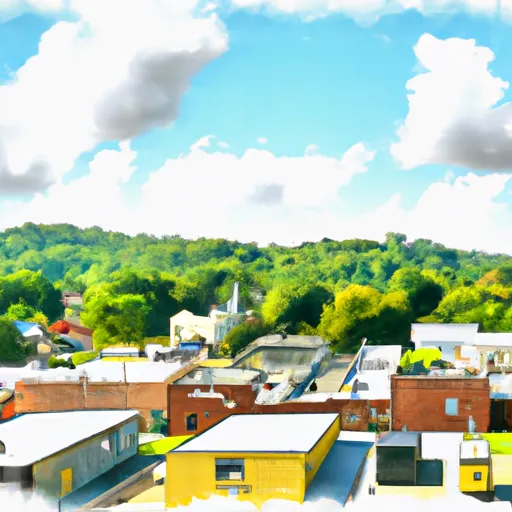-
 Snoflo Premium
Snoflo Premium
Get unlimited access to all our content
With no Ad interruptions! - Start Your Free Trial Login with existing account
Wilder
Eden Index
Climate
7.5
•
Recreation
0.7
•
Community
•
Safeguard
3.2/10

Wilder, Tennessee is a small town nestled in the picturesque Cumberland Plateau region. Known for its stunning natural beauty, the town experiences a moderate climate throughout the year. Summers are warm with average temperatures ranging from 70 to 90 degrees Fahrenheit, while winters are mild with temperatures ranging from 30 to 50 degrees Fahrenheit. Wilder receives an average annual precipitation of around 50 inches, providing ample water resources for its hydrology constituents.
The town boasts an abundance of outdoor recreation opportunities due to its close proximity to the Cumberland River and surrounding forests. The river offers excellent fishing opportunities, with various species including bass, catfish, and trout available for anglers. The lush forests provide a haven for hiking and camping enthusiasts, featuring numerous trails that wind through beautiful landscapes and lead to breathtaking viewpoints.
For those seeking more adrenaline-pumping activities, Wilder offers opportunities for kayaking, canoeing, and rafting along the Cumberland River. The river's rapids provide thrilling experiences for water sports enthusiasts, attracting both locals and tourists alike.
Overall, Wilder, Tennessee offers a favorable climate, abundant water resources, and a wide range of outdoor recreation opportunities, making it an ideal destination for nature lovers and adventure seekers.
What is the Eden Index?
The Snoflo Eden Index serves as a comprehensive rating system for regions, evaluating their desirability through a holistic assessment of climate health, outdoor recreation opportunities, and natural disaster risk, acknowledging the profound impact of these factors on livability and well-being.
Climate Health Indicator (CHI): 7.5
Wilder receives approximately
1462mm of rain per year,
with humidity levels near 84%
and air temperatures averaging around
14°C.
Wilder has a plant hardyness factor of
6, meaning
plants and agriculture in this region thrive during a short period during spring and early summer. Most
plants will die off during the colder winter months.
By considering the ideal temperature range, reliable water supplies, clean air, and stable seasonal rain or snowpacks, the Climate Health Indicator (CHI) underscores the significance of a healthy climate as the foundation for quality living.
A healthy climate is paramount for ensuring a high quality of life and livability in a region, fostering both physical well-being and environmental harmony. This can be characterized by ideal temperatures, reliable access to water supplies, clean air, and consistent seasonal rain or snowpacks.
Weather Forecast
Streamflow Conditions
Upper Cumberland
Area Rivers
Upper Cumberland
Snowpack Depths
Upper Cumberland
Reservoir Storage Capacity
Upper Cumberland
Groundwater Levels
Recreational Opportunity Index (ROI): 0.7
The Recreational Opportunity Index (ROI) recognizes the value of outdoor recreational options, such as parks, hiking trails, camping sites, and fishing spots, while acknowledging that climate plays a pivotal role in ensuring the comfort and consistency of these experiences.
Access to outdoor recreational opportunities, encompassing activities such as parks, hiking, camping, and fishing, is crucial for overall well-being, and the climate plays a pivotal role in enabling and enhancing these experiences, ensuring that individuals can engage in nature-based activities comfortably and consistently.
Camping Areas
| Campground | Campsites | Reservations | Toilets | Showers | Elevation |
|---|---|---|---|---|---|
| Coosa River County Park | None | 591 ft | |||
| Possum Creek RV - Chickamauga Lake | None | 774 ft | |||
| Harrison Bay State Park | 149 | 721 ft | |||
| Lillydale - Dale Hollow Lake | 114 | 653 ft | |||
| Skull Island - Chickamauga Lake | None | 717 ft | |||
| Sale Creek - Chickamauga Lake | 50 | 707 ft | |||
| Chester Frost Park | None | 750 ft | |||
| VFW County Park | None | 1,096 ft | |||
| 56 | 886 ft | ||||
| Obey River - Dale Hollow Lake | 131 | 658 ft |
Nearby Fishing
Nearby Ski Areas
Catastrophe Safeguard Index (CSI):
The Catastrophe Safeguard Index (CSI) recognizes that natural disaster risk, encompassing floods, fires, hurricanes, and tornadoes, can drastically affect safety and the overall appeal of an area.
The level of natural disaster risk in a region significantly affects safety and the overall livability, with climate change amplifying these risks by potentially increasing the frequency and intensity of events like floods, fires, hurricanes, and tornadoes, thereby posing substantial challenges to community resilience and well-being.
Community Resilience Indicator (CRI):
The Community Resilience Indicator (CRI) recognizes that education, healthcare, and socioeconomics are crucial to the well-being of a region. The CRI acknowledges the profound impact of these elements on residents' overall quality of life. By evaluating educational resources, healthcare accessibility, and economic inclusivity, the index captures the essential aspects that contribute to a thriving community, fostering resident satisfaction, equity, and social cohesion.

